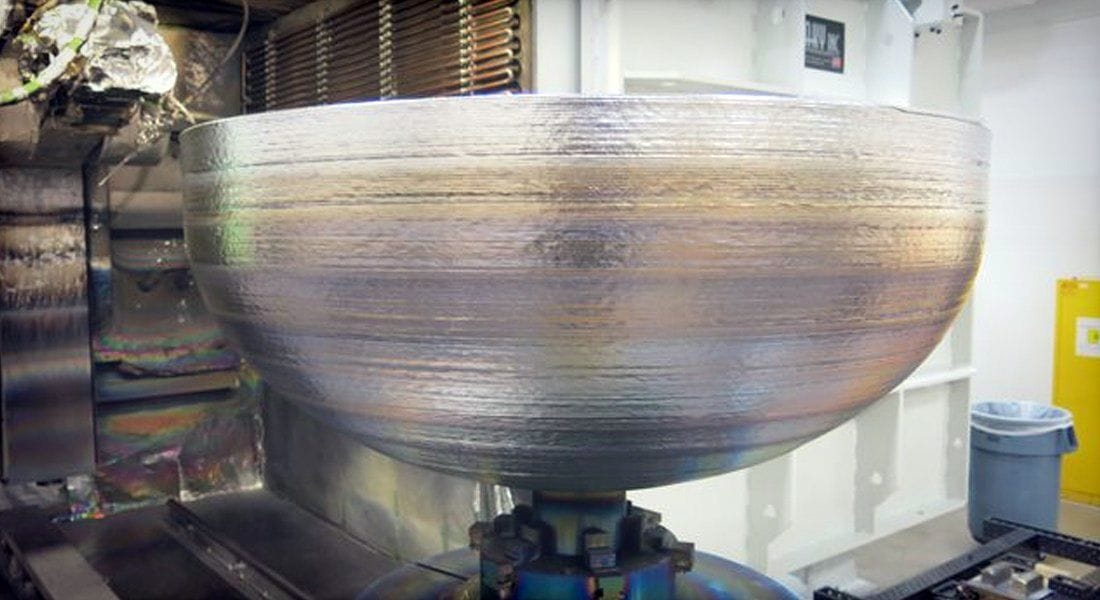
Since its founding in 1995, Lockheed Martin has made a myriad of contributions to the aerospace industry with groundbreaking new technologies.
With the introduction of 3D printers and the onset of additive manufacturing, Lockheed has leveraged these tools to create everything from missile components to spacecraft parts.
The aerospace company can now add giant 3D printed satellite fuel tank to their list of accomplishments, taking the record for largest qualified 3D part created for space applications, beating out a toaster-sized electronics enclosure.
To create the tank on a relatively quick scale, Lockheed engineers used the Electron Beam Additive Manufacturing method where the titanium is in metal or powder form and fused together by an electron beam.
Completed dome exterior ready to be mated to the fuel tank body.
The tank itself is designed to hold 74.4 liters of fuel, and only the tank dome ends were 3D printed while the tank body was crafted through traditional means, all of which were then welded together.
Read the rest at SolidSmack.com

